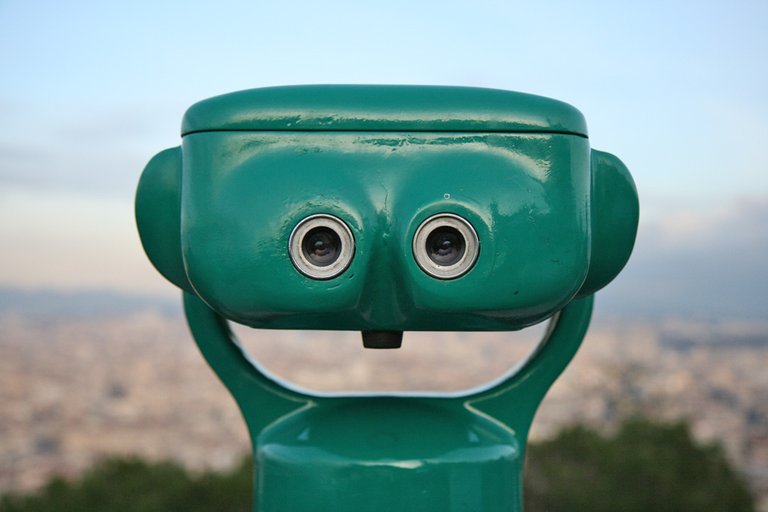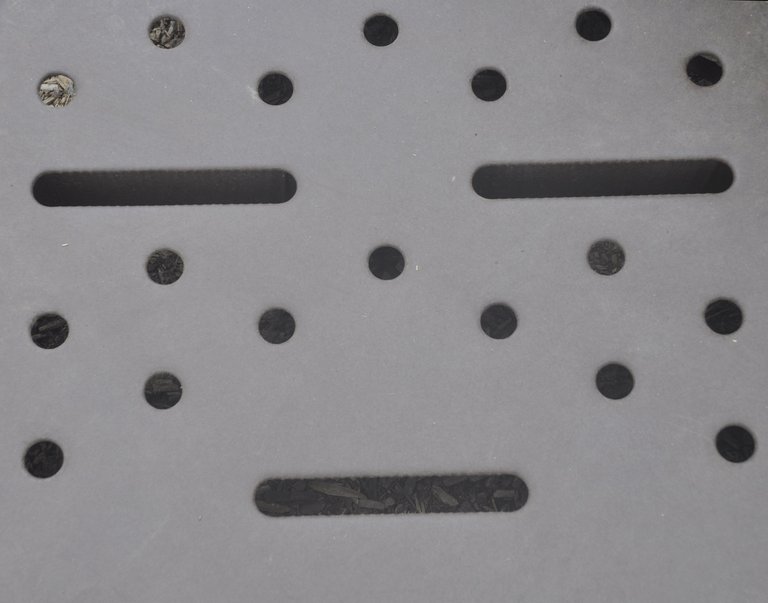Have you heard of the term Facial Pareidolia? Okay, before I explain it, what do you see when you look at this image?
So, I guess you saw a face? it isn't out of the ordinary that you are seeing a face. We see faces in a lot of things, including cups, socket, button, kitchen knob, fruits, the sky, and so on. It isn't like our brain is malfunctioning, our brain just have a tendency of seeing faces in objects when they are not actually faces there.
Humans are good at identifying faces of other humans as well as animals, and this skill was one we took along with us even through our evolutionary process of natural selection. The ability to identify faces is a skill we used to identify faces that could potentially hurt us, thereby keeping us safe. As humans, we are able to pick out faces and to identify if they are friends or foes within the shortest time possible.
To see, light shines on the object, they are sent through the visual nerves to the brain where it reaches the visual cortex. This process helps to identify different objects very fast before the brain pick it in full. The visual system will have to ignore or interpret and the brain would interpret objects based on what and where pathway where the where pathway is focused on locations of object while the what pathway is used to identify what it is.
When it comes to the brain identifying a face, researchers have agreed that three dots arranged in a triangular pattern with two dots being up and one dot at the down on a contrasting background is enough for the brain to identify an object as a face. When the eyes visualize something with the three dots, the area of the brain for identifying face is first triggered making us to assume it is a face before other parts of the brain that helps to identify the object which are a little slower begins to catch up.
When we experience facial pareidolia, we see the face as well as the object itself. Another question we are faced with are is this trait inborn or do we grow up to have this skill. To get this, scientist worked with babies of about 6 days old, putting them into MRI to read their brain activities and found that the brains of the baby responsible for face detection were already sending messages to one another just like adults.
While some researchers agree with this, others disagree with the research saying it is not 100% proof that we are born with the ability since we are not able to see line, movement and angles as infants, rather we learn them as we grow but then research has shown that babies prefer to look at faces compared to looking at other objects. Since babies do not see clearly from infant and have to learn to see faces and attribute them to different activities especially food, play, and comfort, then saying it is born and not learned is still debated and studied.
This study is needed so as to be able to help those who are unable to identify faces, a condition known as Prosopagnosia (face blindness). The research is not only important for these people, studies have also showed that people Alzheimer's disease have issues with the visual processing part of their brain, it can also help with the ability to diagnose autism spectrum early in children.
Still on the face recognition stuff, a group of scientists in the UK found that people are more attracted to products that looked happy or had a happy face on them, also, what about the cars that are looked like they were smiling having better sales than cars without such and people who are tough tend to love cars that have tough expressions or a serious minded look.
Our brains love faces and this is why we love animals with muscles on their faces that can give this smile like dogs compared to those that didn't have such faces like wolves. So when next you see faces in those inanimate objects next time, just relax because you are not the only one seeing it, and if you are not, then there is a problem.
Reference
https://qbi.uq.edu.au/brain/brain-functions/visual-perception
https://onlinelibrary.wiley.com/doi/full/10.1002/acp.4105
https://www.nature.com/articles/nrn1766
https://www.wired.com/story/why-humans-see-faces-everyday-objects/
https://www.sciencedaily.com/releases/2020/03/200302200736.htm
https://www.researchgate.net/publication/224771827
https://www.nature.com/articles/s41467-020-18325-8
https://www.pnas.org/doi/full/10.1073/pnas.1911359117
https://www.nature.com/articles/s44159-023-00152-5
https://psycnet.apa.org/record/2011-09441-012
https://www.nih.gov/news-events/news-releases



